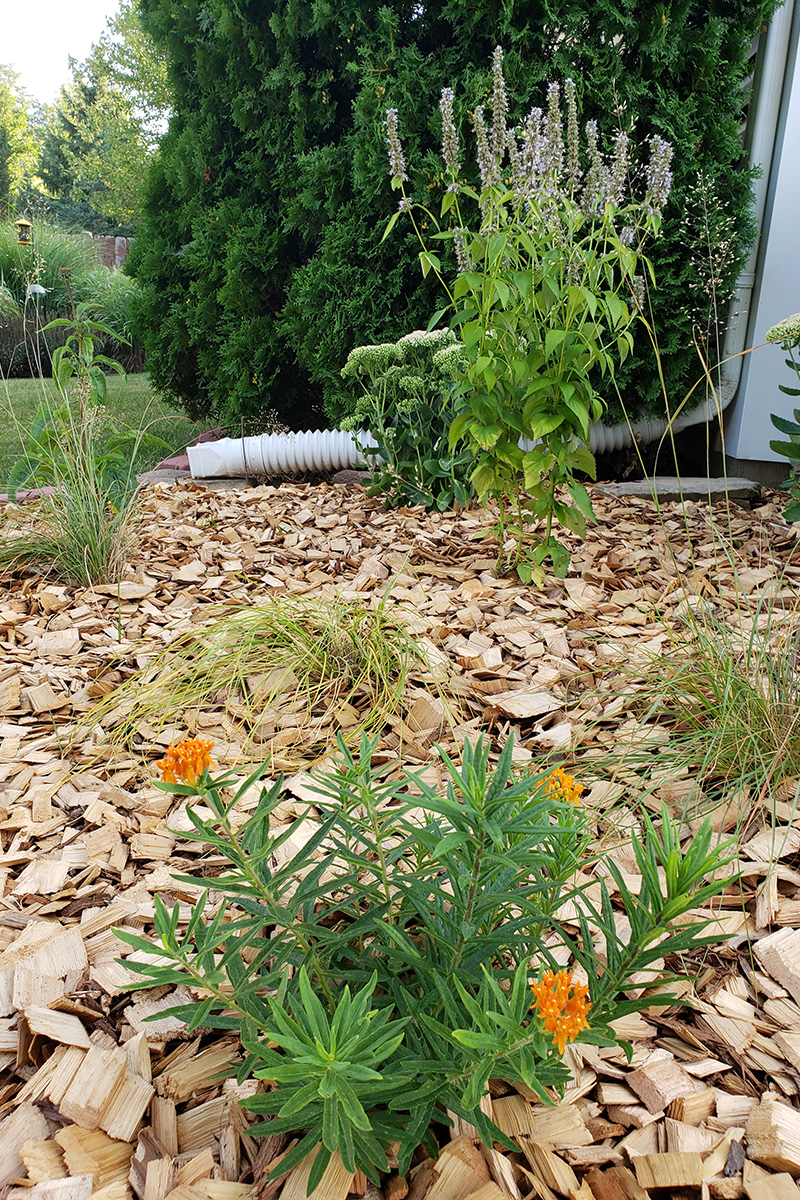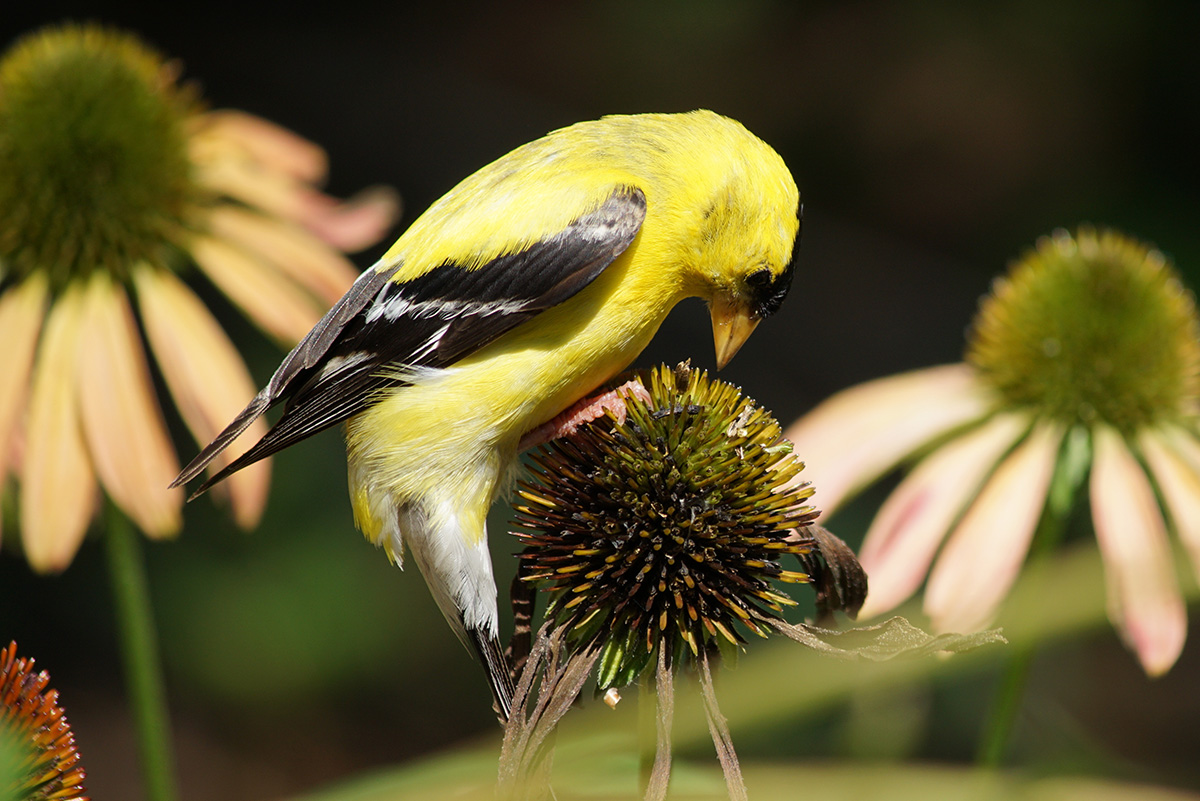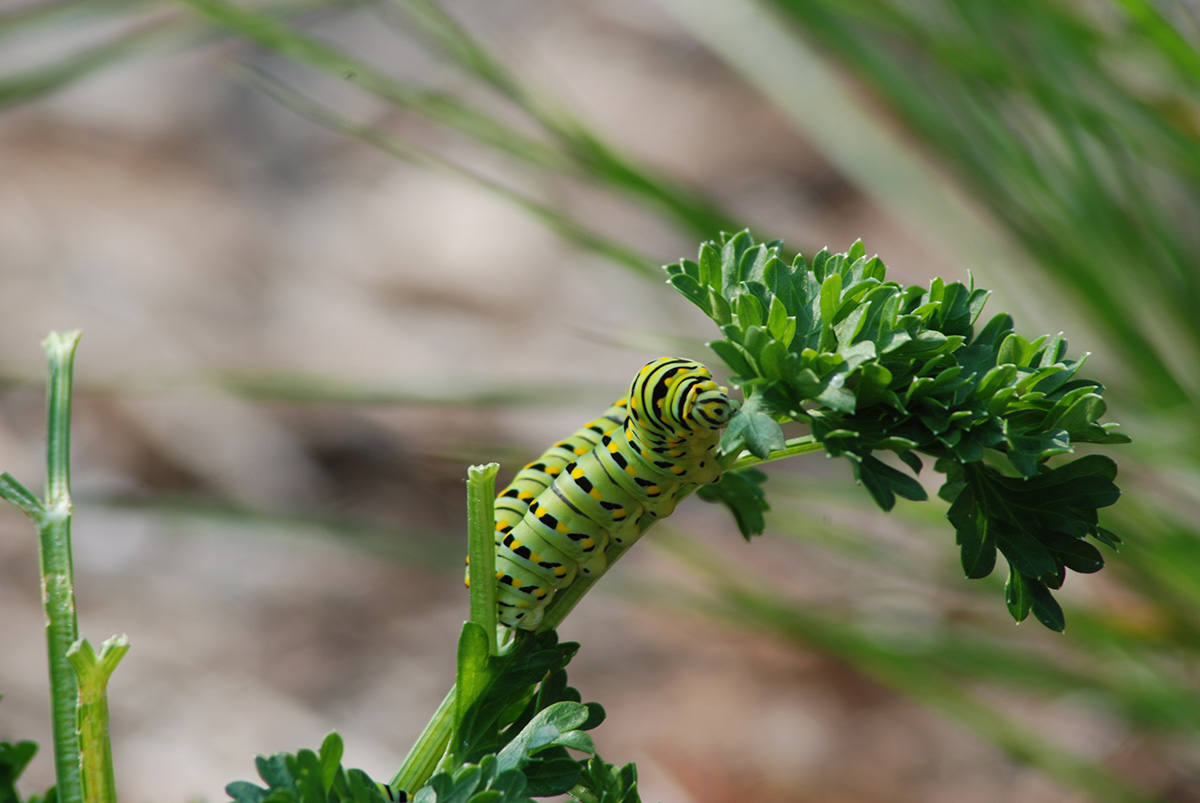Build a Backyard Habitat

These newly planted native perennials will attract bees and butterflies in the summer and support more wildlife diversity than turfgrass. | Photo Credit: Sarah Zack, Illinois-Indiana Sea Grant
Have you noticed a decrease in the number of butterflies, dragonflies, or other wildlife in your neighborhood? Across the globe, wildlife populations are on a decline due to increasingly fragmented habitat resulting from human development.
Generally, habitat includes all the plants, trees, bushes, logs, and other amenities that allow wildlife to thrive by providing access to food and water, cover, and places to bear young. When we develop land, we convert once connected habitat into small isolated pockets, making it difficult for wildlife to travel.
Fortunately, property owners can provide wildlife habitat by shrinking their lawn and adding landscaping with native plants and trees that, in addition to providing habitat, also protect water quality. Native plants are plants that grow naturally in a region such as northern Illinois and Indiana. These plants have had thousands of years to adapt to their surroundings. Most importantly, native wildlife has also adapted to their surroundings, and they depend on these native plants for their survival. For example, native plants provide butterflies with the nectar and foliage they need as caterpillars and adults. Adult butterflies may accidentally mistake non-native ornamental plants for a good egg-laying site, when in fact they are not always able to support the species. By taking care to provide essential habitat for the entire life cycle of a species, property owners can be rewarded with an abundance of wildlife to enjoy.
Supply Food and Water for Wildlife
Native forbs (an herbaceous flowering plant other than grasses, sedges, and rushes), shrubs, and trees provide the foliage, nectar, pollen, berries, seeds, and nuts that many species of wildlife require to survive. While non-native plants may have many of these features, the timing of their pollination and seed dispersal may not coincide with local wildlife feeding and breeding patterns.
Taking this into account, many landscapers utilize native plants for continuous bloom (the selection of a variety of plants so that a garden is in bloom throughout the growing season). Such a practice will ensure both adequate food resources for wildlife throughout the season and a longer period in which to enjoy a vibrant garden. Ask your landscaper or local nursery for more information on selecting plants for continuous bloom.

Native plants don’t just support pollinators—they also provide an important food source for native birds like this goldfinch. | Photo Credit: Shutterstock
Wildlife also require sources of clean water for many purposes, including drinking, bathing, and reproduction. Water sources may include natural features such as ponds, lakes, rivers, and wetlands. In the absence of natural features, human-made features such as bird baths, installed ponds, or rain gardens work well as substitutes.
The following resources contain information about options available to landowners to incorporate plants into their landscape that will provide shelter and food for a variety of pollinators.
Selecting Plants for Pollinators: Eastern Broadleaf Forest
IISG Full Sun Pollinator Garden: A native guide to attract pollinators
Provide Cover and Other Essentials
Wildlife need cover to hide from predators and inclement weather. Native vegetation acts as a perfect shelter for terrestrial wildlife. Shrubs, thickets, and brush piles provide great hiding places, as do fallen trees and branches. If natural options are not available, consider creating a simple structure to meet the habitat needs of your favorite wildlife. For example, butterflies need flat areas to bask in the sun. Therefore, by incorporating stone pavers into your landscaping, you are helping to meet the needs of this species. Human-made structures like ponds can provide cover for aquatic life and amphibians. There are many ways that property owners can create cover and other essentials for wildlife habitat.

Including favored host plants for insect larvae (like this black swallowtail caterpillar), will ensure that butterflies will thrive in your garden year after year. | Photo Credit: Janice Milanovich, Illinois-Indiana Sea Grant
Give Wildlife a Place to Raise their Young
It’s great to have butterflies, dragonflies, and other wildlife pass through your property, but how can you keep them there long enough to enjoy? For one, you can provide places for wildlife to raise their young. By incorporating the right habitat features into your property, you can contribute to the reproductive success of your favorite wildlife year after year. For instance, female butterflies lay eggs on plant species that their offspring will eat, so including favored host plants in your habitat helps ensure reproductive success. Also, be sure to avoid using pesticides and herbicides, which may kill beneficial insects and the foods they rely on in order to reproduce.








